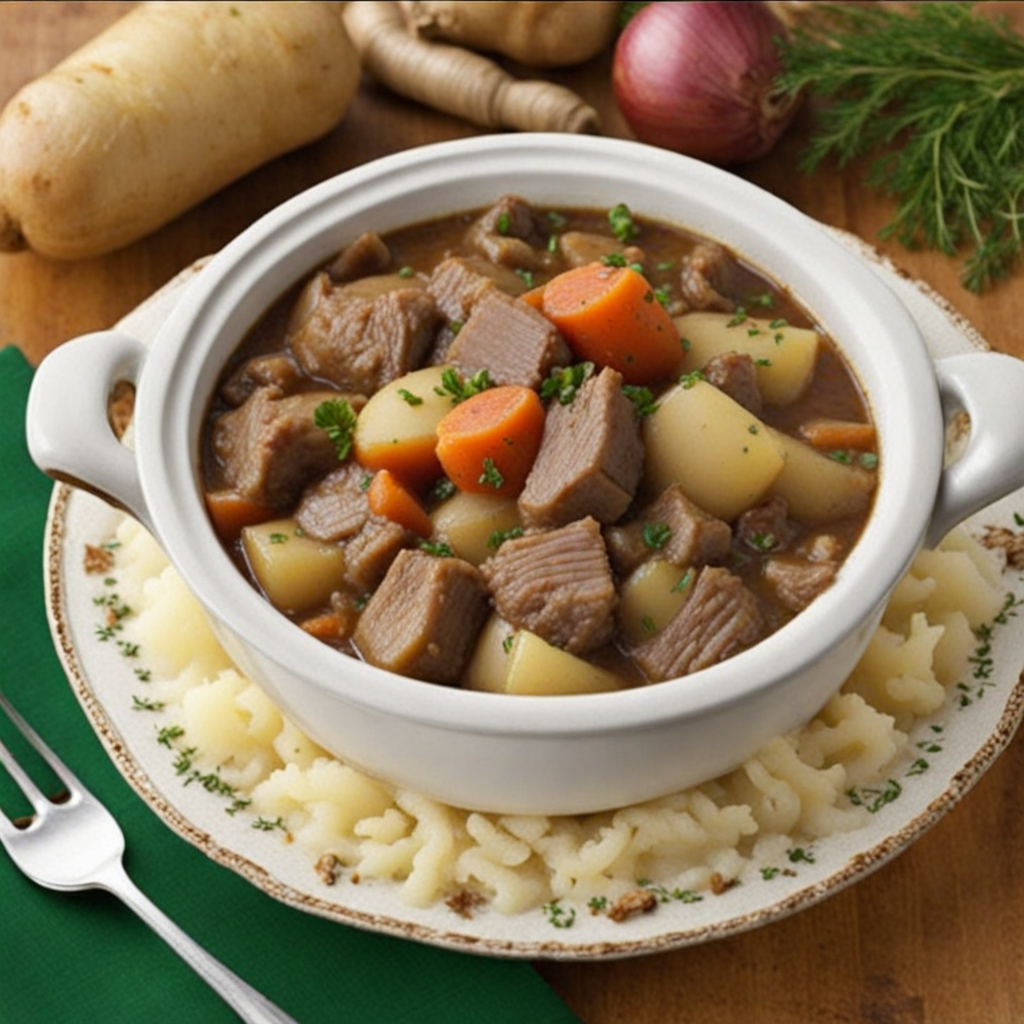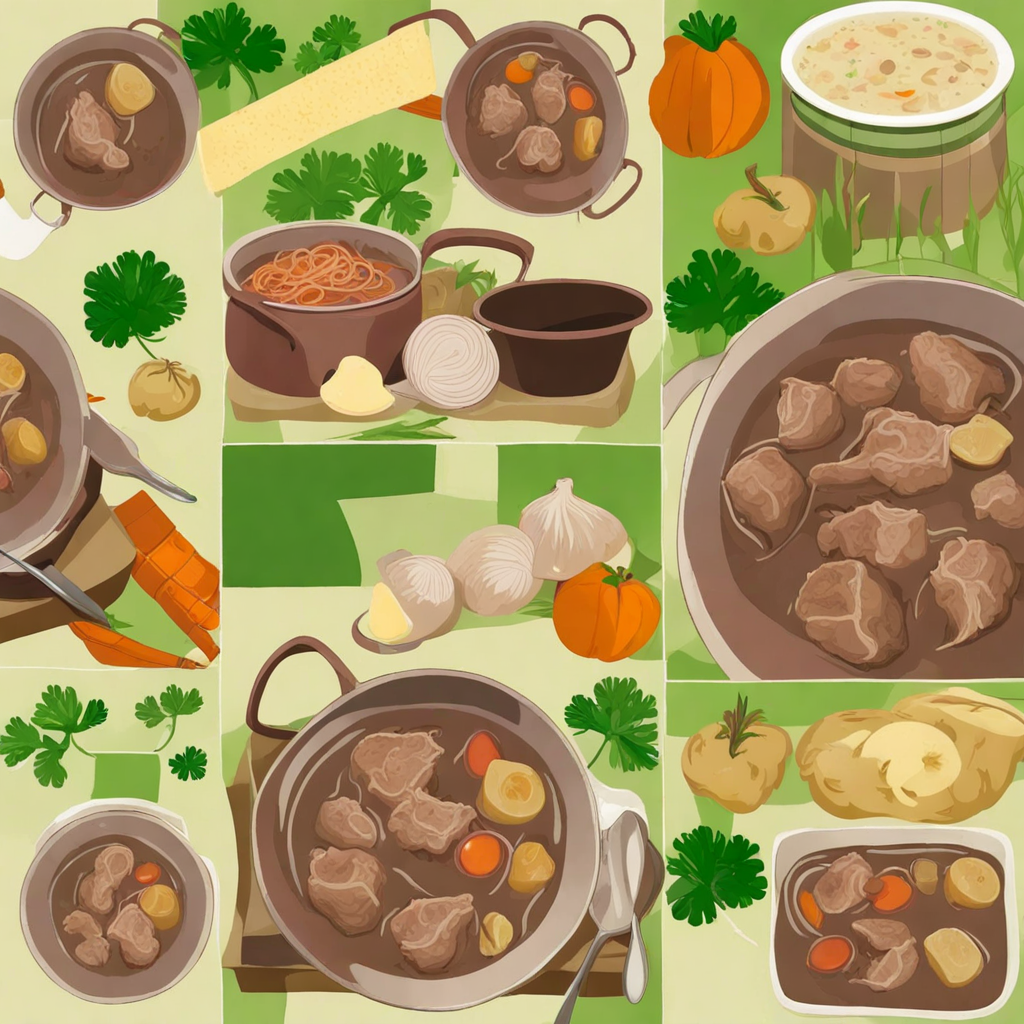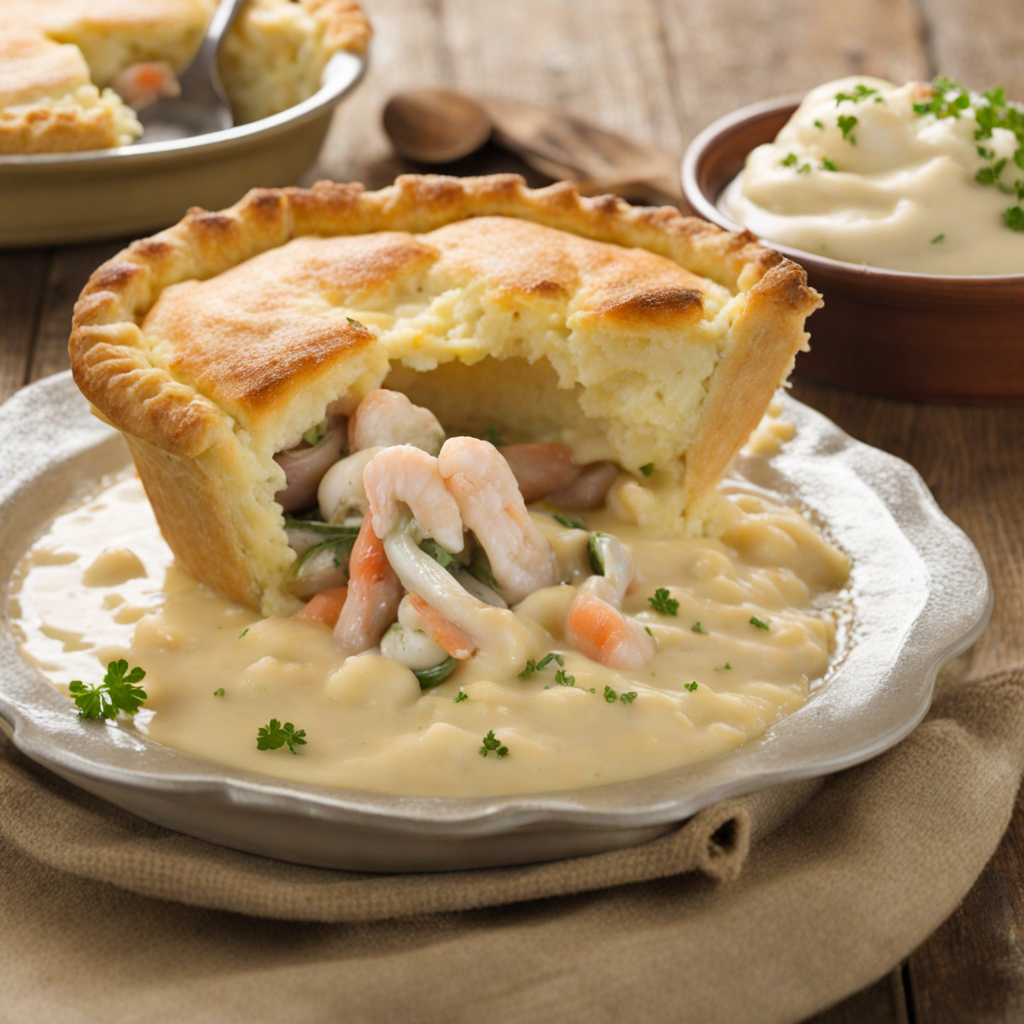Irish Stew
Irish Stew is a traditional dish that embodies the heart and soul of Irish cuisine. This hearty stew is primarily made with tender cuts of lamb or beef, slowly simmered to perfection, allowing the flavors to meld beautifully. The meat is typically accompanied by an array of root vegetables, such as carrots, potatoes, and onions, which add both sweetness and depth to the dish. Each ingredient is chosen with care, reflecting the simplicity and freshness of rural Irish cooking, making it a comforting meal that warms the body and soul. The cooking process is essential to achieving the rich and savory profile of Irish Stew. As the ingredients bubble away in a pot, they release their natural flavors, creating a thick, flavorful broth that is both satisfying and nourishing. The stew is often seasoned with herbs like thyme and parsley, enhancing the overall taste without overpowering the dish’s rustic charm. The result is a delightful combination of tender meat, soft vegetables, and a fragrant broth that is perfect for dipping crusty bread or soda bread. Irish Stew is more than just a meal; it is a culinary experience steeped in tradition and history. Often enjoyed on chilly evenings or during festive gatherings, it brings people together around the table, celebrating the warmth of home-cooked food. Each spoonful tells a story of Ireland’s agricultural roots and the love poured into every pot, making it a must-try for anyone looking to explore the rich tapestry of Irish flavors.
How It Became This Dish
Origin of Ballymaloe Stobhach Ballymaloe Stobhach, often simply referred to as stobhach, is a traditional Irish stew that hails from the picturesque region of County Cork, specifically the Ballymaloe area. The term "stobhach" is derived from the Irish word "stobh," which translates to "a stew" or "a broth." This dish is not merely a recipe but a culinary expression of the rural Irish way of life, reflecting the local agricultural practices and the seasonal availability of ingredients. Historically, the origins of stobhach can be traced back to the early 19th century when households relied on simple, hearty meals that could feed a family with minimal resources. The dish typically features a combination of meat—traditionally lamb or beef—along with root vegetables such as potatoes, carrots, and onions, all simmered gently in a pot. The earliest versions were often made with whatever was on hand, making it a versatile and adaptable dish, emblematic of the resourcefulness found in Irish kitchens. \n\n Cultural Significance Ballymaloe Stobhach holds a special place in Irish culture, particularly in the context of communal dining and family gatherings. The act of preparing and sharing stobhach is steeped in tradition, often associated with the warmth of home and the comfort of family. In rural communities, this stew is more than just a meal; it represents a connection to the land and the changing seasons, as ingredients are sourced from local farms and gardens. In addition, Ballymaloe Stobhach is a testament to the principles of sustainability and farm-to-table eating, a concept that has gained renewed interest in recent years. The dish encourages the use of local produce, emphasizing the importance of supporting local farmers and preserving regional culinary practices. This emphasis on locality and tradition has made stobhach a symbol of Irish identity, celebrated in both homes and restaurants throughout the country. \n\n Development Over Time As Irish cuisine has evolved, so too has the interpretation of Ballymaloe Stobhach. In the mid-20th century, the culinary landscape began to shift with the rise of the Irish diaspora and the influence of international flavors. While the traditional stobhach remained a staple, chefs and home cooks began experimenting with the dish, incorporating new ingredients and techniques. The Ballymaloe Cookery School, founded by Darina Allen in the 1980s, played a significant role in elevating traditional Irish dishes like stobhach to a more modern culinary stage. The school emphasizes the use of fresh, organic ingredients, and its influence has led to a resurgence of interest in traditional recipes, including stobhach. Today, many chefs are reinterpreting this classic dish, adding elements like herbs, spices, and even unique twists such as the inclusion of Guinness or specialty stocks, thus creating new variations that still pay homage to the original. \n\n Modern Interpretations In contemporary Irish cuisine, Ballymaloe Stobhach has retained its status as a comfort food while adapting to modern palates and dietary preferences. With the growing awareness of health and nutrition, many versions of stobhach have emerged that cater to vegetarian and vegan diets. By substituting meat with hearty legumes, tofu, or additional vegetables, cooks are able to preserve the essence of the dish while making it accessible to a broader audience. Moreover, gourmet restaurants across Ireland have begun to feature stobhach on their menus, often elevating it to a fine dining experience. Chefs may serve it with artisanal breads or pair it with local craft beers, showcasing Ireland's rich culinary heritage while appealing to the modern diner. Such adaptations highlight the dish's versatility and its ability to transcend its rustic roots, making it a beloved option in both casual and formal dining settings. \n\n Festivals and Celebrations Ballymaloe Stobhach is often celebrated during various Irish food festivals, where local chefs and home cooks come together to showcase their versions of this beloved stew. Events such as the Ballymaloe Literary Festival of Food and Wine and other regional food fairs emphasize the importance of traditional recipes in contemporary Irish culture. During these festivals, visitors have the opportunity to taste a variety of stobhach preparations, each reflecting the unique flavors and cooking styles of the chefs. These gatherings not only celebrate the dish itself but also foster a sense of community and shared heritage. Cooking demonstrations, tastings, and workshops allow participants to engage with the culinary history of Ireland and learn about the significance of ingredients and preparation methods. Such events highlight the ongoing evolution of Ballymaloe Stobhach, ensuring that it remains a cherished part of Ireland’s culinary narrative. \n\n Global Reach As Irish communities spread across the globe, so too has the love for Ballymaloe Stobhach. In countries with significant Irish immigrant populations, such as the United States, Canada, and Australia, variations of stobhach have emerged, often influenced by local ingredients and cooking traditions. Irish pubs and restaurants around the world frequently feature stobhach on their menus, allowing expatriates and newcomers alike to experience a taste of home. This global reach has contributed to a greater appreciation for traditional Irish food, with stobhach serving as a gateway for many to discover the broader spectrum of Irish cuisine. Through culinary exchanges and a growing interest in authentic dining experiences, Ballymaloe Stobhach continues to bridge cultural gaps, fostering connections through shared meals and stories. \n\n Conclusion In summation, Ballymaloe Stobhach is more than just a dish; it is a reflection of Ireland’s rich culinary heritage, embodying the values of community, sustainability, and resourcefulness. As it evolves through modern interpretations and global influences, this traditional Irish stew remains a beloved comfort food, celebrated for its warmth and the stories it tells. Whether enjoyed in a cozy home or a bustling restaurant, Ballymaloe Stobhach continues to nourish both body and soul, firmly securing its place in the heart of Irish culture.
You may like
Discover local flavors from Ireland







